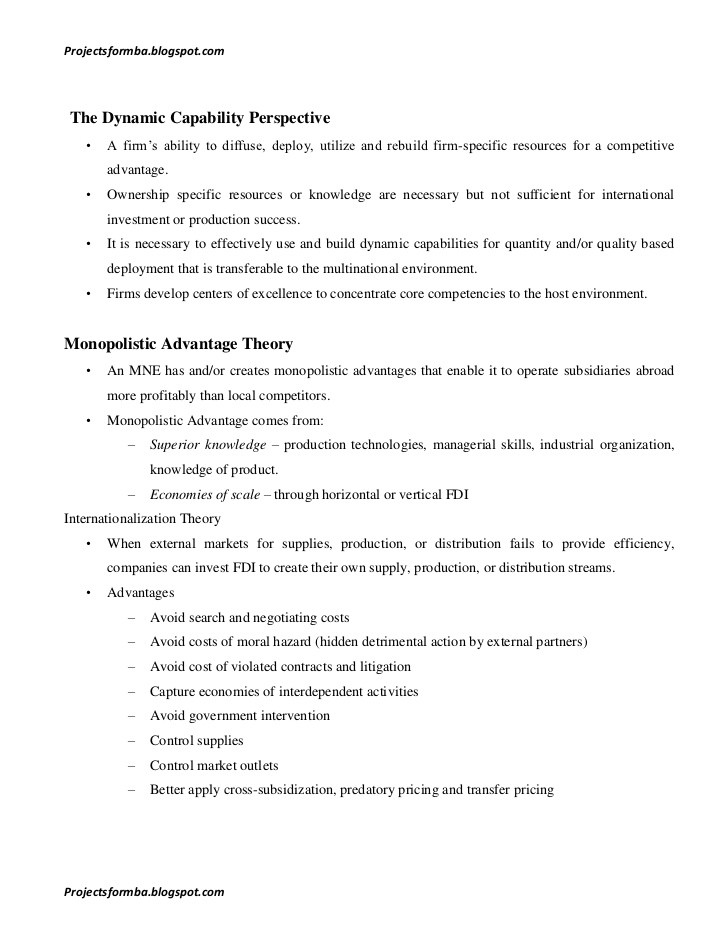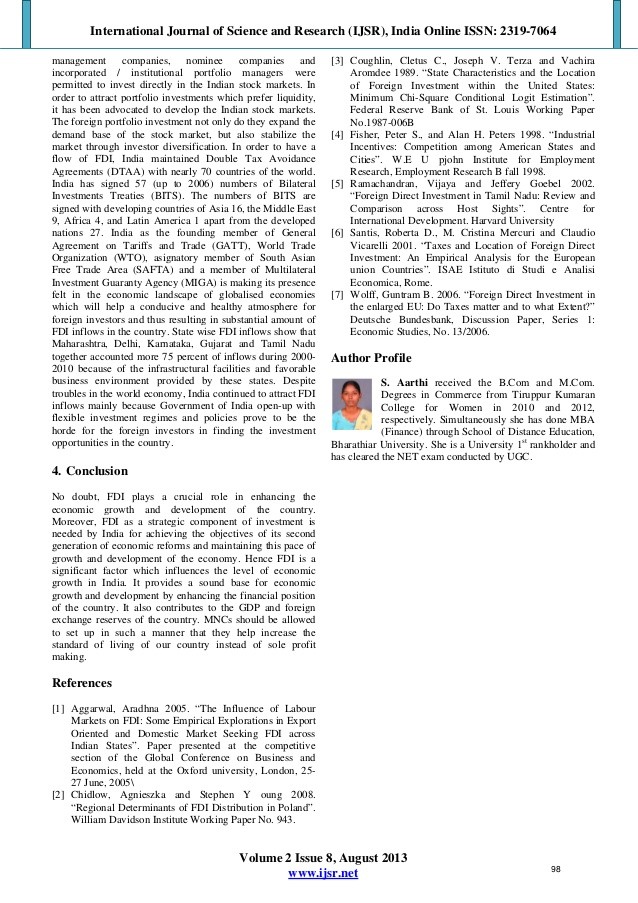IMPACT OF FOREIGN INSTITUTIONAL INVESTMENT ON INDIAN STOCK MARKET (1) MBA Business Seminar Topics_1
Post on: 2 Июнь, 2015 No Comment

Please Upload A Seminar Or Project Report/Code/Material/Presentation Here
IMPACT OF FOREIGN INSTITUTIONAL INVESTMENT ON INDIAN STOCK MARKET
IMPACT OF FOREIGN INSTITUTIONAL INVESTMENT ON INDIAN STOCK MARKET
IMPACT OF FOREIGN INSTITUTIONAL.doc (Size: 355 KB / Downloads: 53)
EXECUTIVE SUMMARY
Institutional Investor is any investor or investment fund that is from or registered in a country outside of the one in which it is currently investing. Institutional investors include hedge funds, insurance companies, pension funds and mutual funds. The growing Indian market had attracted the foreign investors, which are called Foreign Institutional Investors (FII) to Indian equity market, and in this paper, we are trying a simple attempt to explain the impact and extent of foreign institutional investors in Indian stock market.
What does the name FII means? It is the abbreviation of Foreign Institutional Investors. The term is used most commonly in India to refer to outside companies investing in the financial markets of India. International institutional investors must register with the Securities & Exchange Board of India (SEBI) to participate in the market. One of the major market regulations pertaining to FIIs involves placing limits on FII ownership in Indian companies. They actually evaluate the shares and deposits in a portfolio. The major source (almost 50%) of money the FIIs invest is from the issue of Participatory Notes (P-Notes) or what are sometimes called Offshore Derivatives.
As on September 5, there are over 1484 FIIs and 38 foreign brokers registered to Securities & Exchange Board of India (SEBI). We are also examining whether market movement can be explained by these investors. We often hear that whenever there is a rise in market, it is explained that it is due to foreign investors’ money and a decline in market is termed as withdrawal of money from FIIs.
After 1991, due to our liberalization process, there was large flow of foreign funds from abroad. Current investments by FII are Rs. 2, 55,464.40 Crores as compared to Rs. 2, 83,468.40 Crores by the end of 31 December 2007. That implies that they had withdrawn almost 9% of money they had deposited till December 2007. The amount was much in the months of 2008 as compared to corresponding months of 2007, and that is a reason for the volatility of the stock market. In 2008, the net buying is only Rs. 5,603 Crores compared to Rs. 36,869 Crores in 2007. From all this, we can analyze prime facia that the FII’s influence market. A more investments by FIIs indicate that they are confident in Indian market. Usually, the mode of operations of FIIs was taking loans from countries where interests is low (like Japan) and invest in booming markets like India.
But the sub-prime crisis and other economic conditions had caused a liquidity crunch for these institutions. So they are forced to withdraw money from Indian market so as to repay loans they had taken. These withdrawals had caused panic in market, and even domestic investors are making them sell their shares.
But one aspect we should agree on is that the FII’s increased role had changed the face of Indian stock market. It had brought both quantitative and qualitative change. It had also increased the market depth and breadth. The emphasis on fundamentals had caused efficient pricing of shares. Since there is no condition on FIIs that they should disclose in which company they are investing, those figures are not available.
Many qualitative tests like regression tests had proved that there is direct relation between market movements and fund flows of FIIs. In this, we will analyze the investments in different months and years, and tries to find the impact of FIIs in stock market.
INTRODUCTION
INDIAN STOCK MARKET:
The capital market in India witnessed several policy initiatives since the year 2000, which further refined the market micro-structure, modernized operations and broadened investment choices for the investors. These developments in the securities market, which support corporate initiatives, finance the exploitation of new ideas and facilitate management of financial risks, hold out necessary momentum for growth, development and strength of the emerging market economy of India.
The securities market has two interdependent and inseparable segments, the new issues (primary market) and the stock (secondary) market. The primary market provides the channel for sale of new securities while the secondary market deals in securities previously issued.
The primary market provides the channel for creation of new securities through issuance of financial instruments by public companies as well as Governments and Government agencies and bodies whereas the secondary market helps the holders of these financial instruments to sale for exiting from the investment. The price signals, which subsume all information about the issuer and his business including associated risk, generated in the secondary market, help the primary market in allocation of funds. The primary market issuance is done either through public issues or private placement. A public issue does not limit any entity in investing while in private placement, the issuance is done to select people.

Investors trade their holdings in response to changes in their assessment of risk and return in this market. They also sell securities for cash to meet their liquidity needs. The exchanges do not provide facility for spot trades in a strict sense. Closest to spot market is the cash market in exchanges where settlement takes place after some time. Trades taking place over a trading cycle (one day under rolling settlement) are settled together after a certain time. Reforms in the securities market, particularly the establishment and empowerment of SEBI, market determined allocation of resources, screen based nation-wide trading, de-materialization and electronic transfer of securities, rolling settlement and ban on deferral products, sophisticated risk management and derivatives trading, have greatly improved the regulatory framework and efficiency of trading and settlement. Indian market is now comparable to many developed markets in terms of a number of qualitative parameters.
FOREIGN INSTITUTIONAL INVESTORS IN INDIA
FII (Foreign Institutional Investors) is used to denote an investor; it is mostly of the form of a institution or entity which invests money in the financial markets of a country. The term FII is most commonly used in India to refer to companies that are established or incorporated outside India, and is investing in the financial markets of India. These investors must register with the Securities & Exchange Board of India (SEBI) to take part in the market.
Since 1990-91, the Government of India embarked on liberalisation and economic reforms with a view of bringing about rapid and substantial economic growth and move towards globalisation of the economy. As a part of the reforms process, the Government under its New Industrial Policy revamped its foreign investment policy recognising the growing importance of foreign direct investment as an instrument of technology transfer, augmentation of foreign exchange reserves and globalisation of the Indian economy. Simultaneously, the Government, for the first time, permitted portfolio investments from abroad by Foreign Institutional Investors (FII) in the Indian capital market. The entry of FIIs seems to be a follow up of the recommendation of the Narsimhan Committee Report on Financial System. While recommending their entry, the Committee, however did not elaborate on the objectives of the suggested policy. The committee only suggested that the capital market should be gradually opened up to foreign portfolio investments.
From September 14, 1992 with suitable restrictions, FIIs were permitted to invest in all the securities traded on the primary and secondary markets, including shares, debentures and warrants issued by companies which were listed or were to be listed on the Stock Exchanges in India. While presenting the Budget for 1992-93, the then Finance Minister Dr. Manmohan Singh had announced a proposal to allow reputed foreign investors, such as Pension Funds etc. to invest in Indian capital market. To operationalise this policy announcement, it had become necessary to evolve guidelines for such investments by Foreign Institutional Investors (FIIs). The policy framework for permitting FII investment was provided under the Government of India guidelines vide Press Note date September 14, 1992.
The guidelines formulated in this regard were as follows:
1) Foreign Institutional Investors (FIIs) including institutions such as Pension Funds, Mutual Funds, Investment Trusts, Asset Management Companies, Nominee Companies and Incorporated/Institutional Portfolio Managers or their power of attorney holders (providing discretionary and non-discretionary portfolio management services) would be welcome to make investments under these guidelines.
2) FIIs would be welcome to invest in all the securities traded on the Primary and Secondary markets, including the equity and other securities/instruments of companies which are listed/to be listed on the Stock Exchanges in India including the OTC Exchange of India. These would include shares, debentures, warrants, and the schemes floated by domestic Mutual Funds. Government would even like to add further categories of securities later from time to time.
3) FIIs would be required to obtain an initial registration with Securities and Exchange Board of India (SEBI), the nodal regulatory agency for securities markets, before any investment is made by them in the Securities of companies listed on the Stock Exchanges in India, in accordance with these guidelines. Nominee companies, affiliates and subsidiary companies of a FII would be treated as separate FIIs for registration, and may seek separate registration with SEBI.














